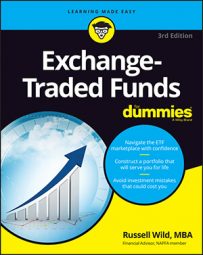That all depends. Some ETFs are way riskier than others. It all comes down to a question of what kind of ETF we’re talking about.
Most ETFs track stock indexes, and some of those stock indexes can be extremely volatile, such as individual sectors of the U.S. economy (technology, energy, defense and aerospace, and so on) or the stock markets of emerging-market nations.
Other ETFs track broader segments of the U.S. stock market, such as the S&P 500. Those can be volatile, too, but less so. Commodity ETFs can be more jumpy than stocks.
But other ETFs track bond indexes. Those tend to be considerably less volatile (and less potentially rewarding) than stock ETFs. One ETF (ticker symbol SHY) tracks short-term Treasury bonds, and as such is only a little bit more volatile than a money market fund.
Many of the newer generation ETFs are leveraged, using borrowed money or financial derivatives to increase volatility (and potential performance). Those leveraged ETFs can be so wildly volatile that you are taking on risk of Las Vegas proportions.
When putting together a portfolio, a diversity of investments can temper risk. Although it seems freakily paradoxical, you can sometimes add a risky ETF to a portfolio (such as an ETF that tracks the price of a basket of commodities, or the stocks of foreign small companies) and lower your overall risk!
If the value of your newly added ETF tends to rise as your other investments fall, that addition will lower the volatility of your entire portfolio. (Financial professionals refer to this strange but sweet phenomenon as Modern Portfolio Theory.)

